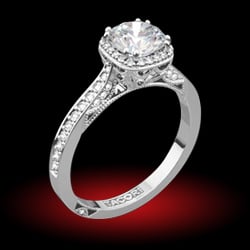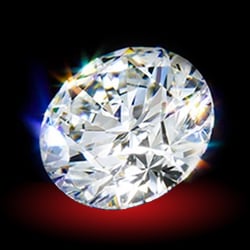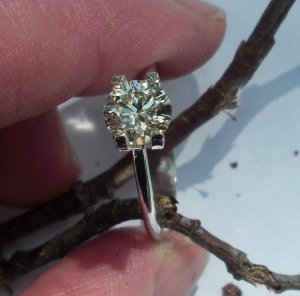L
Lula
Guest
Disclaimer: I do not know the answer to the question(s) I'm about to pose. What I'm hoping for is a (civilized) discussion about something I've noted in the short time I've owned super-ideal cut diamonds.
Recently on PS, I've noticed several threads where an OP posts photos of a recently received/purchased AGS 0 or GIA triple Ex diamond and asks about it looking "dark" or tinted. Typically the stone is has a color grade in the near colorless range. Typically the stone is set, sometimes in a solitaire setting, but more often the question comes up when comparing the center stone to the melee in the setting.
Photos are posted. Suggestions are given. Sometimes the OP keeps the diamond; sometimes the OP decides the diamond is too low on the color scale and the diamond is returned in favor of a diamond with a higher color grade.
Something I've wondered about since coming to PS is if what the OPs in these threads are seeing is the additional contrast that well-cut stones show. Often contrast is depicted as analogous to a black and white checkerboard (e.g., see the information from the Knowledge section on PS on brilliance, fire and scintillation link).
I'm asking because when comparing my diamond (AGS 0) I color, to the majority of diamonds I see on a daily basis, whether in stores or on people's fingers, I notice that diamonds of "average" cut do not show this intense on-off contrast that my diamond does. And I wonder, if a person is used to seeing stones that are cut for size, not performance, would a well-cut stone appear "darker" because of the additional contrast?
Reading this over, I'm not sure if I'm clear, but here goes...
Recently on PS, I've noticed several threads where an OP posts photos of a recently received/purchased AGS 0 or GIA triple Ex diamond and asks about it looking "dark" or tinted. Typically the stone is has a color grade in the near colorless range. Typically the stone is set, sometimes in a solitaire setting, but more often the question comes up when comparing the center stone to the melee in the setting.
Photos are posted. Suggestions are given. Sometimes the OP keeps the diamond; sometimes the OP decides the diamond is too low on the color scale and the diamond is returned in favor of a diamond with a higher color grade.
Something I've wondered about since coming to PS is if what the OPs in these threads are seeing is the additional contrast that well-cut stones show. Often contrast is depicted as analogous to a black and white checkerboard (e.g., see the information from the Knowledge section on PS on brilliance, fire and scintillation link).
I'm asking because when comparing my diamond (AGS 0) I color, to the majority of diamonds I see on a daily basis, whether in stores or on people's fingers, I notice that diamonds of "average" cut do not show this intense on-off contrast that my diamond does. And I wonder, if a person is used to seeing stones that are cut for size, not performance, would a well-cut stone appear "darker" because of the additional contrast?
Reading this over, I'm not sure if I'm clear, but here goes...
















300x240.png)